Abstract
We used three methods to examine the relationship among intracellular pH, transmembrane potential, and extracellular pH. Single-barreled electrodes permitted the determination of resting potential and intracellular pH with a minimum of cellular injury. Double-barreled electrodes, which incorporated a reference as well as a pH-sensitive electrode in a single tip, facilitated the direct measurement of intracellular pH without the interposition of the transmembrane potential. Triple-barreled electrodes permitted measurement of intracellular pH during the controlled hyperpolarization or depolarization of the cell membrane.
The results of all three methods were in close agreement and disclosed that the H+ activity of intracellular and extracellular fluid is in electrochemical equilibrium at any given transmembrane potential. This implies that the determinants of intracellular pH are the transmembrane potential and the blood pH. The actual pH of the normal resting muscle cell is 5.99, as estimated from the normal transmembrane potential and blood pH, or as determined by direct measurements of intracellular pH.
Full text
PDF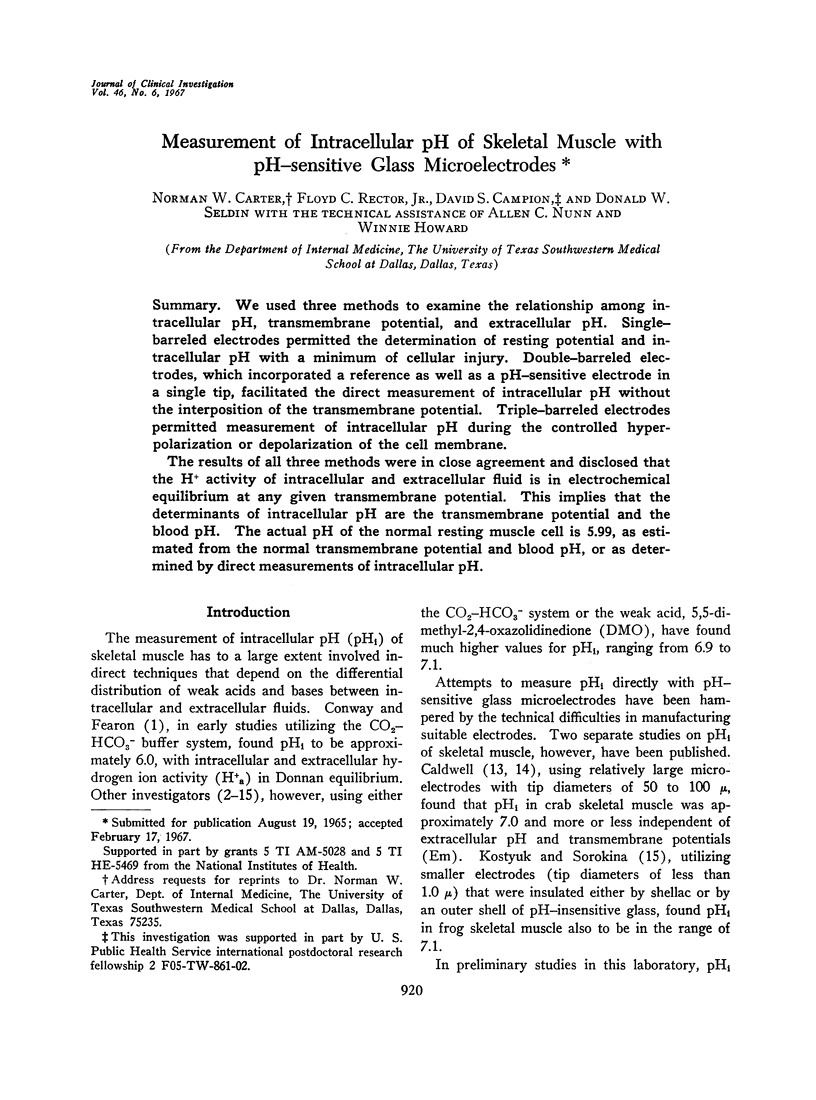
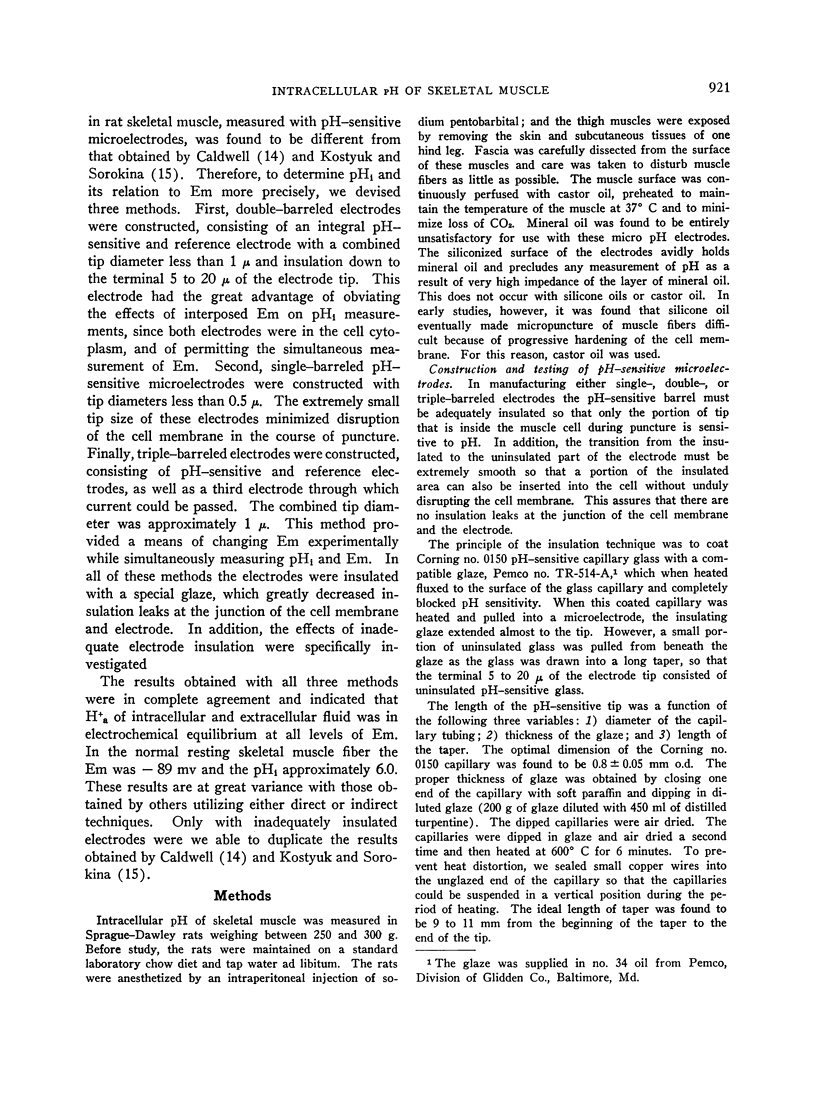
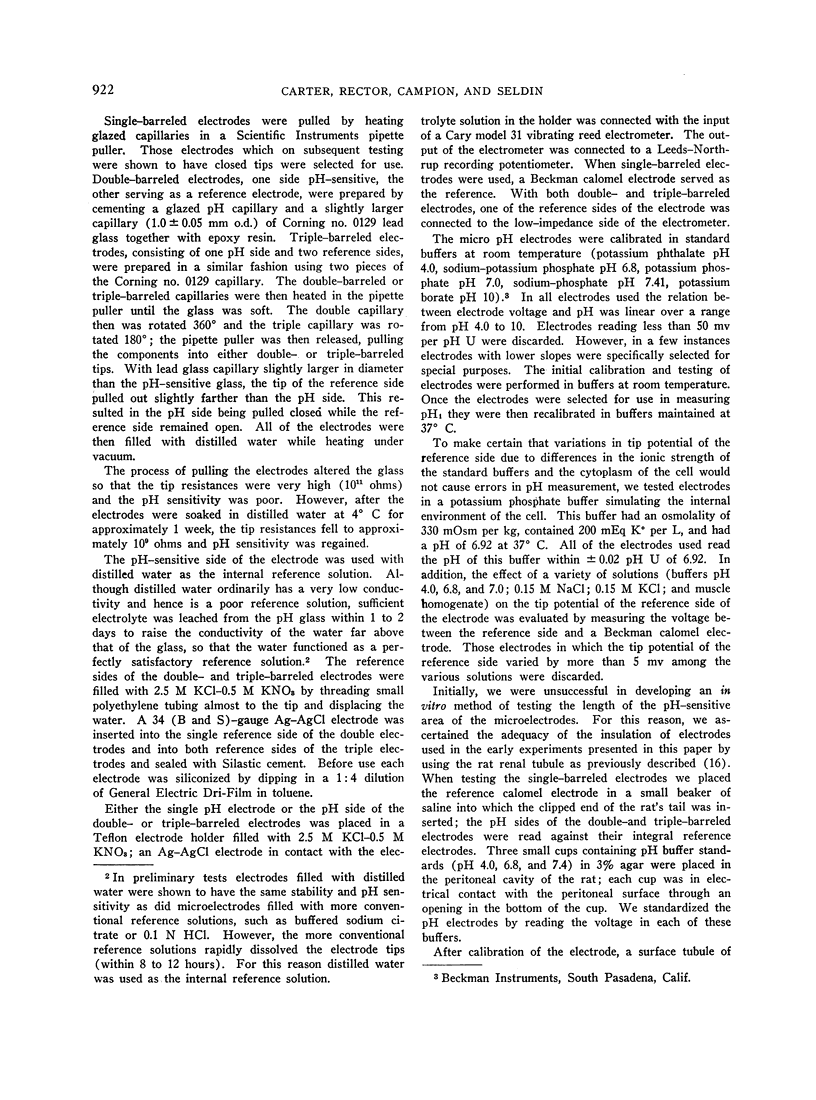
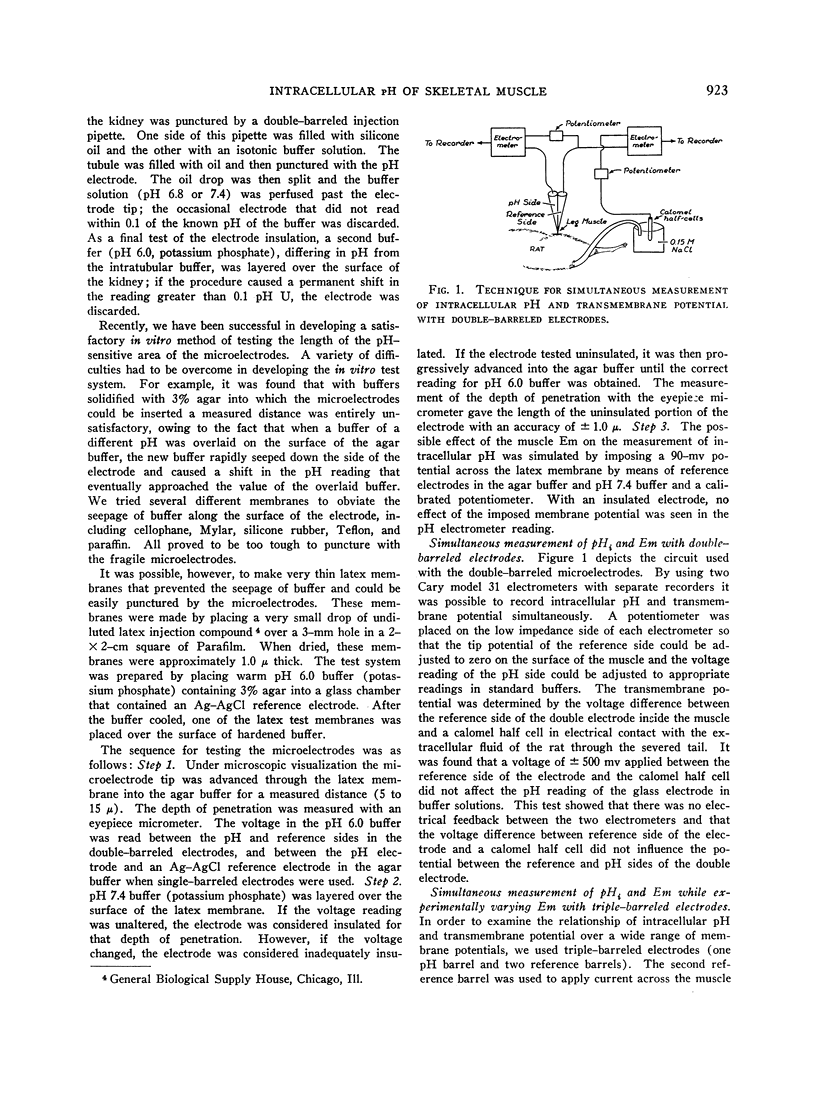
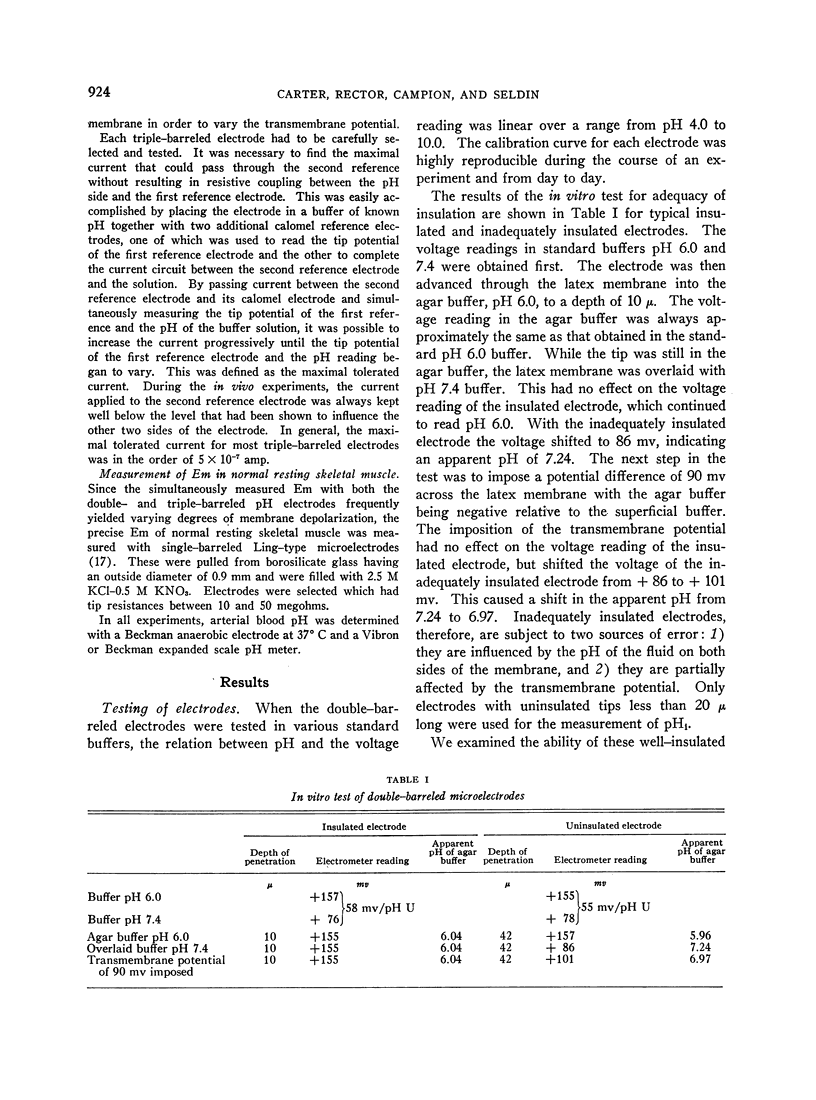
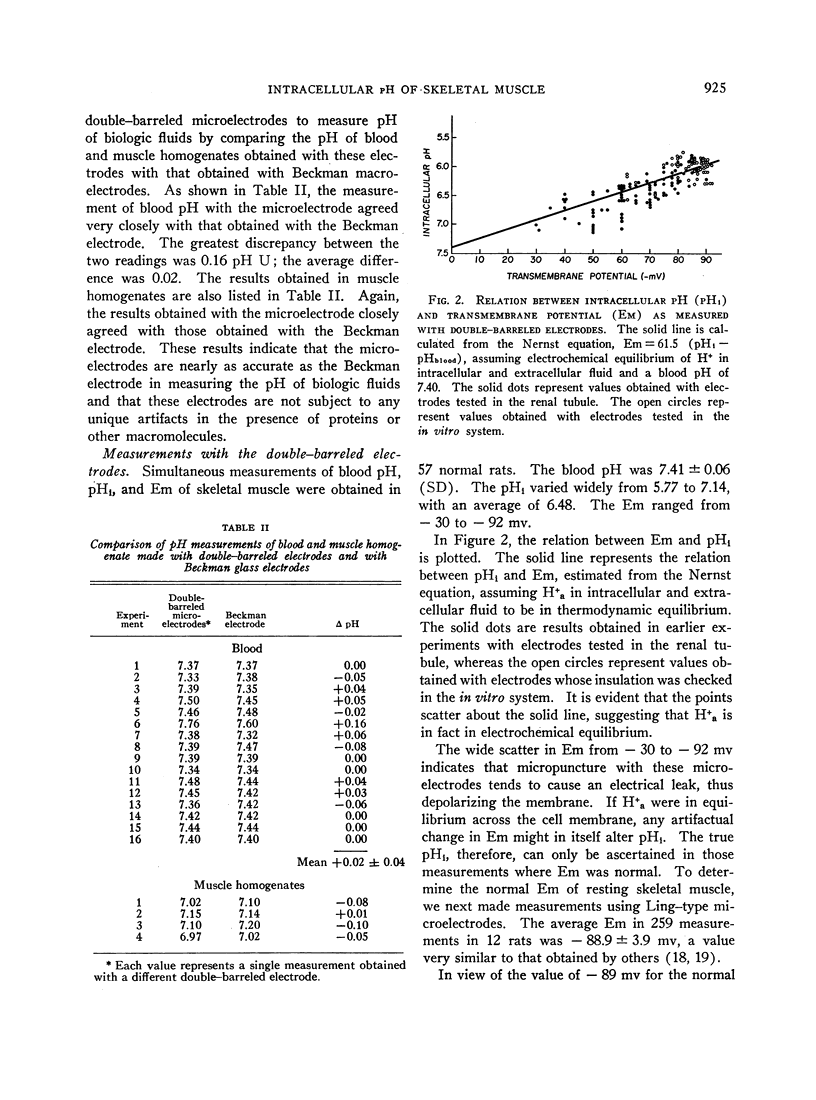
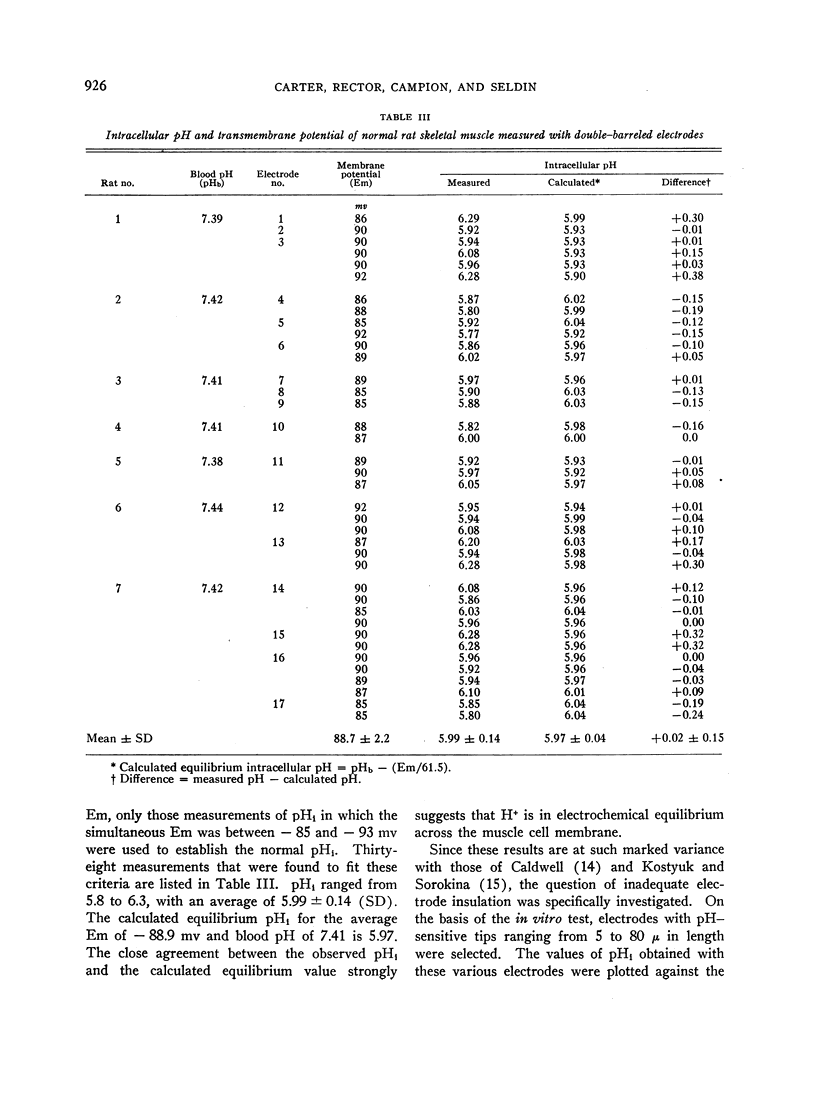
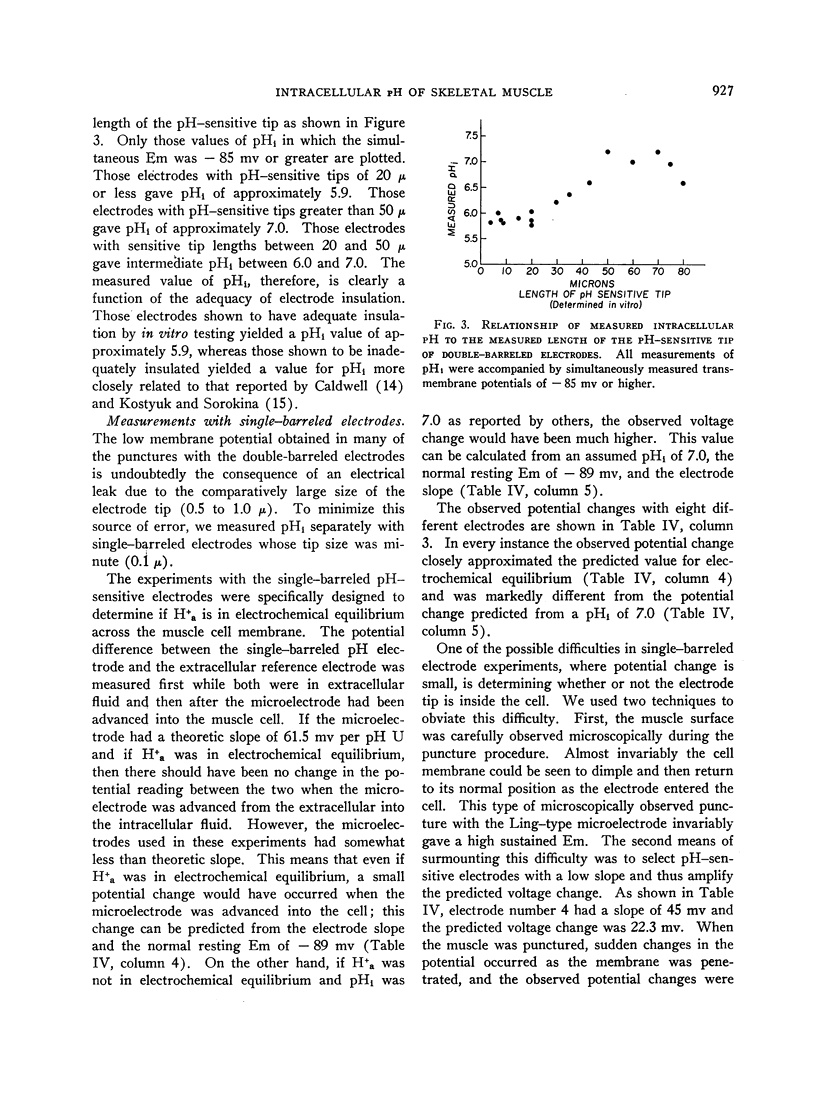
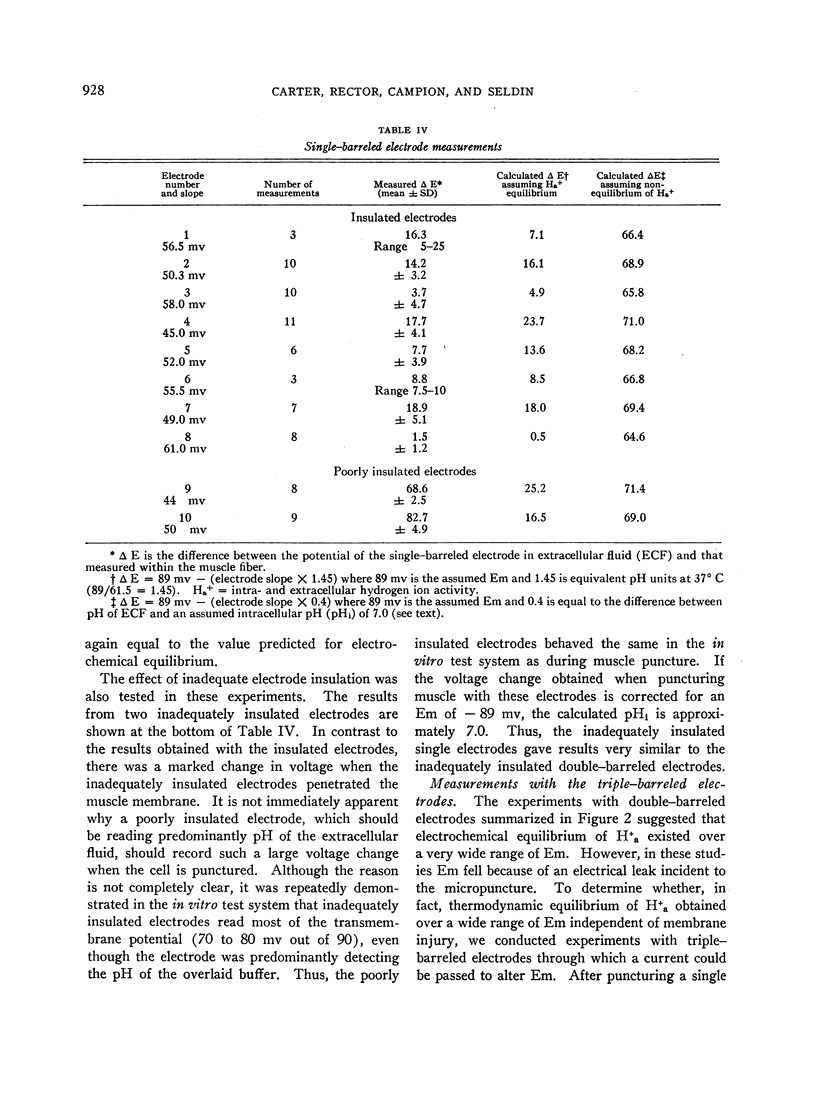
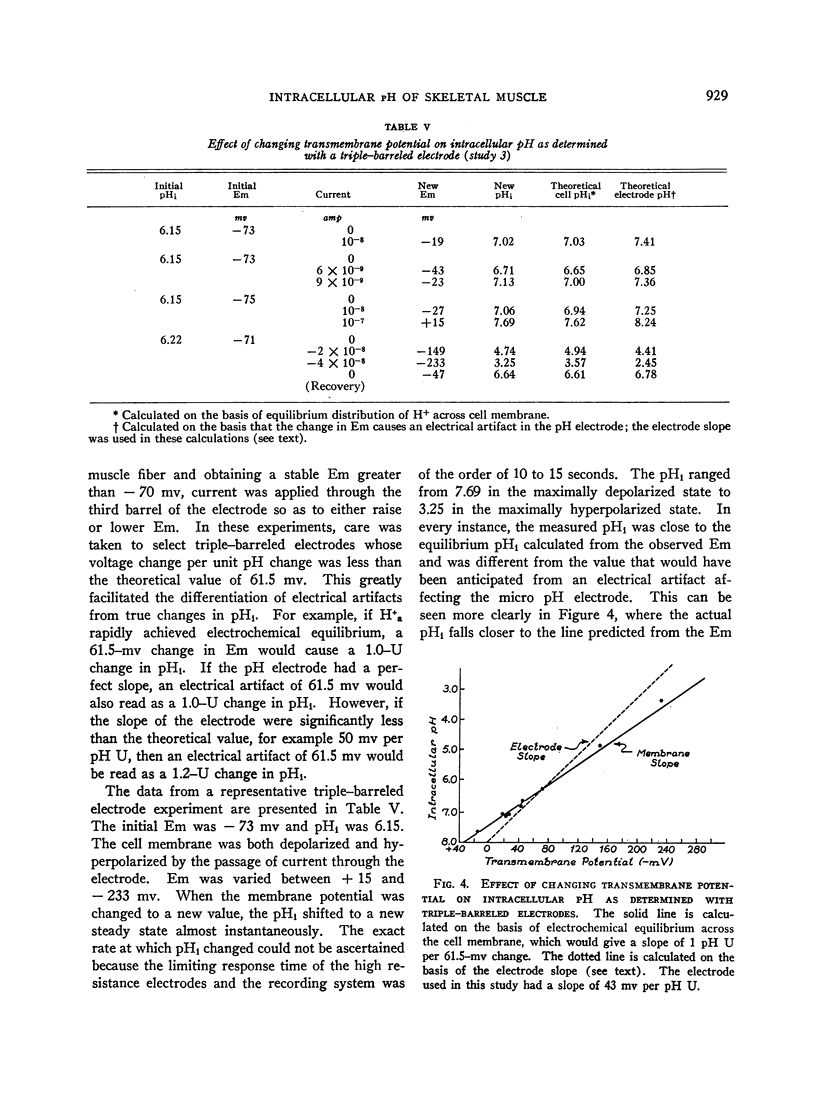
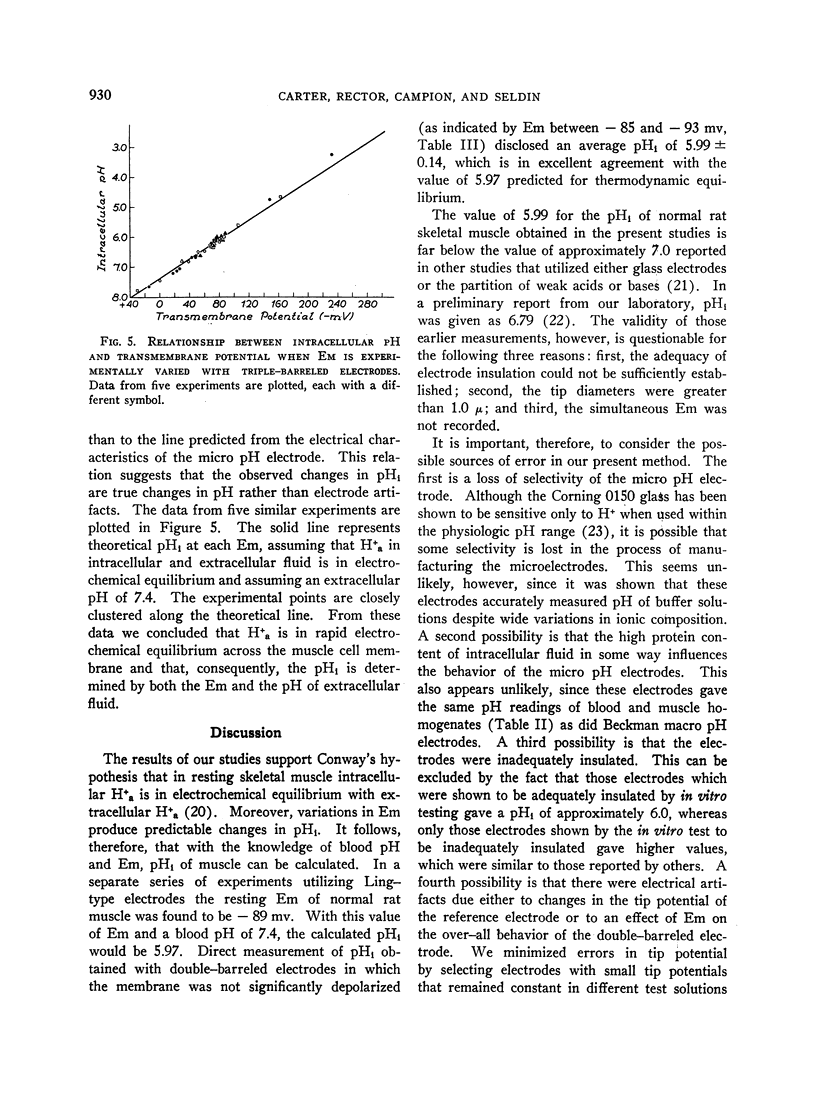
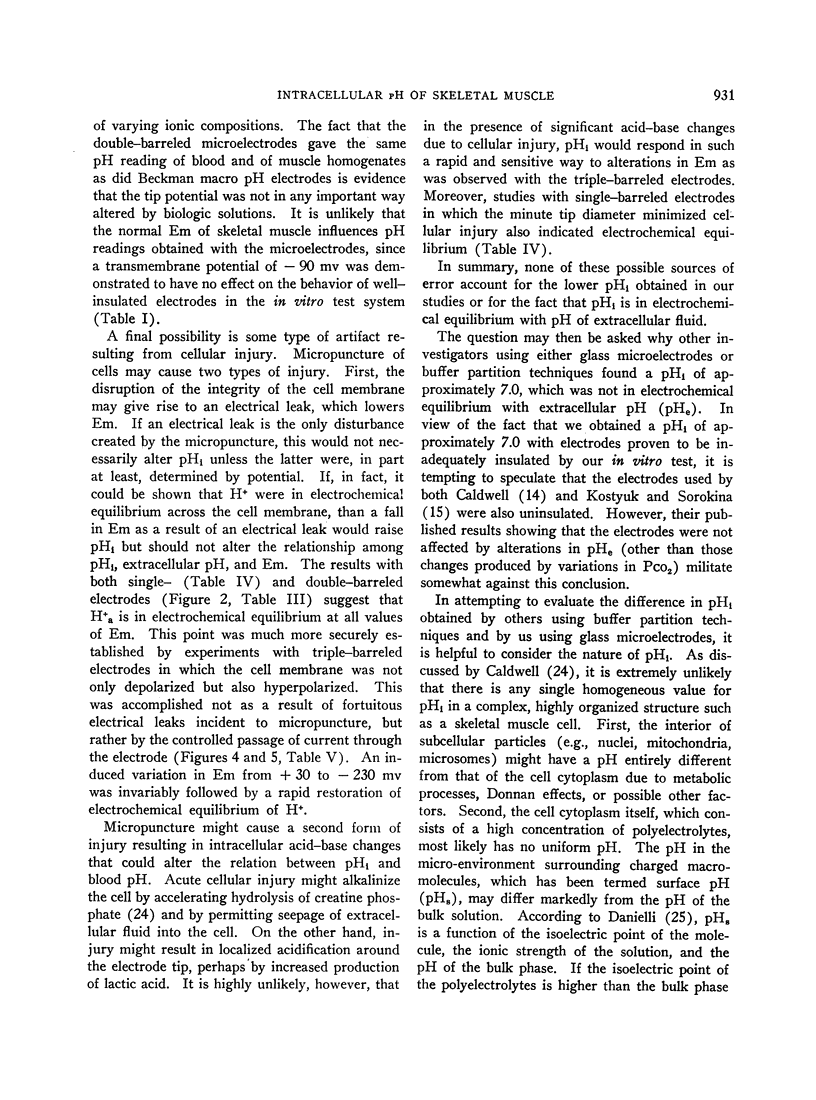
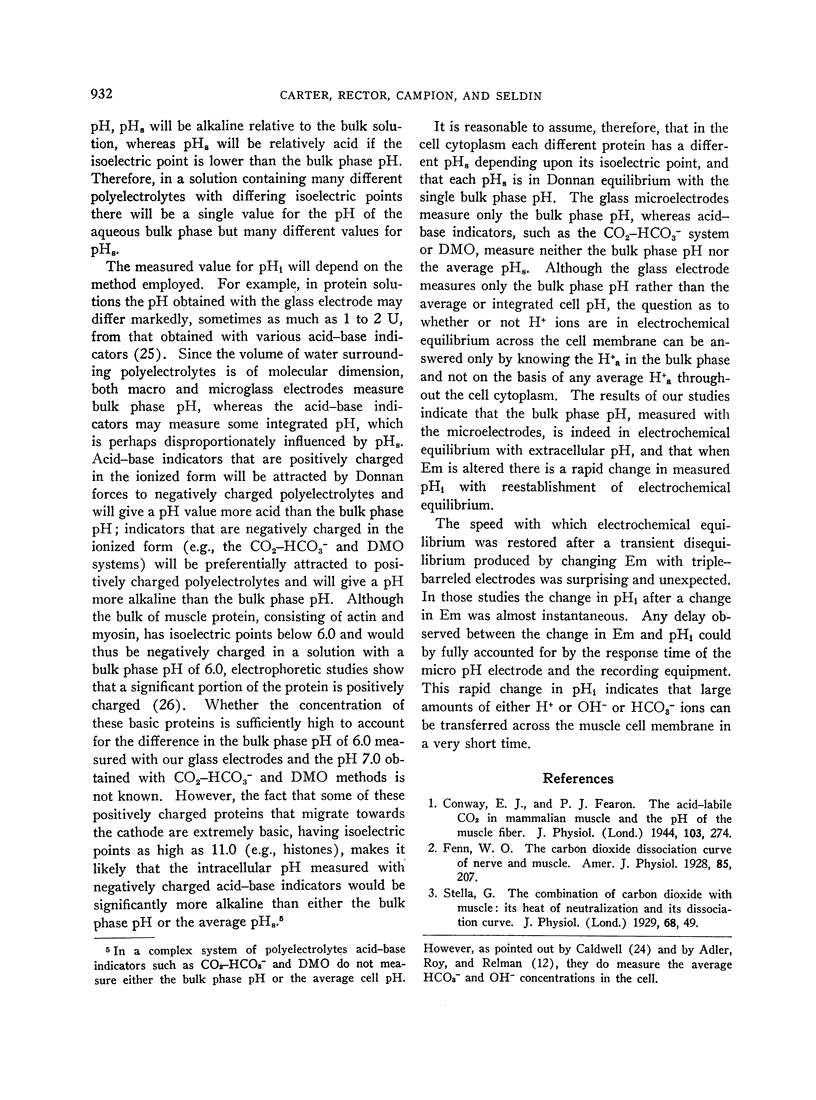
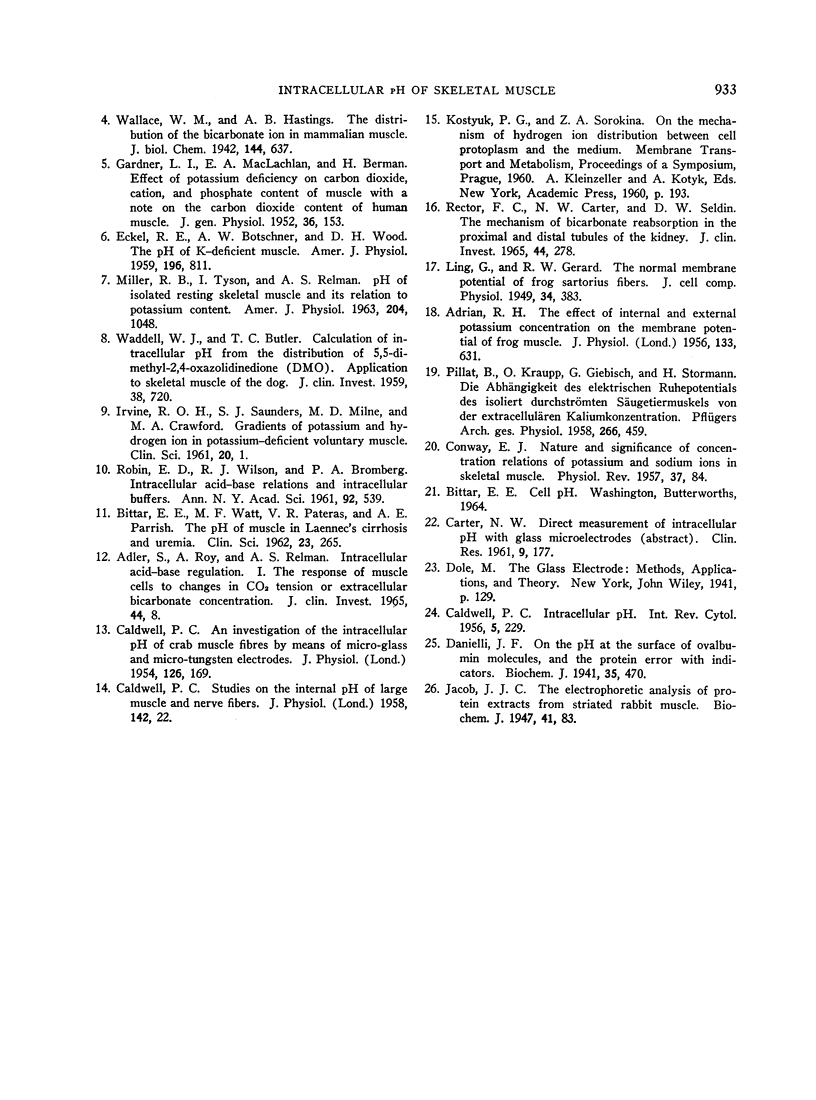
Selected References
These references are in PubMed. This may not be the complete list of references from this article.
- ADLER S., ROY A., RELMAN A. S. INTRACELLULAR ACID-BASE REGULATION. I. THE RESPONSE OF MUSCLE CELLS TO CHANGES IN CO2 TENSION OR EXTRACELLULAR BICARBONATE CONCENTRATION. J Clin Invest. 1965 Jan;44:8–20. doi: 10.1172/JCI105129. [DOI] [PMC free article] [PubMed] [Google Scholar]
- ADRIAN R. H. The effect of internal and external potassium concentration on the membrane potential of frog muscle. J Physiol. 1956 Sep 27;133(3):631–658. doi: 10.1113/jphysiol.1956.sp005615. [DOI] [PMC free article] [PubMed] [Google Scholar]
- BITTAR E. E., WATT M. F., PATERAS V. R., PARRISH A. E. The pH of muscle in Laennec's cirrhosis and uremia. Clin Sci. 1962 Oct;23:265–276. [PubMed] [Google Scholar]
- CALDWELL P. C. An investigation of the intracellular pH of crab muscle fibres by means of micro-glass and micro-tungsten electrodes. J Physiol. 1954 Oct 28;126(1):169–180. doi: 10.1113/jphysiol.1954.sp005201. [DOI] [PMC free article] [PubMed] [Google Scholar]
- CALDWELL P. C. Studies on the internal pH of large muscle and nerve fibres. J Physiol. 1958 Jun 18;142(1):22–62. doi: 10.1113/jphysiol.1958.sp005998. [DOI] [PMC free article] [PubMed] [Google Scholar]
- CONWAY E. J. Nature and significance of concentration relations of potassium and sodium ions in skeletal muscle. Physiol Rev. 1957 Jan;37(1):84–132. doi: 10.1152/physrev.1957.37.1.84. [DOI] [PubMed] [Google Scholar]
- Conway E. J., Fearon P. J. The acid-labile CO(2) in mammalian muscle and the pH of the muscle fibre. J Physiol. 1944 Dec 15;103(3):274–289. doi: 10.1113/jphysiol.1944.sp004076. [DOI] [PMC free article] [PubMed] [Google Scholar]
- Danielli J. F. On the pH at the surface of ovalbumin molecules, and the protein error with indicators. Biochem J. 1941 Apr;35(4):470–478. doi: 10.1042/bj0350470. [DOI] [PMC free article] [PubMed] [Google Scholar]
- ECKEL R. E., BOTSCHNER A. W., WOOD D. H. The pH of K-deficient muscle. Am J Physiol. 1959 Apr;196(4):811–818. doi: 10.1152/ajplegacy.1959.196.4.811. [DOI] [PubMed] [Google Scholar]
- GARDNER L. I., MACLACHLAN E. A., BERMAN H. Effect of potassium deficiency on carbon dioxide, cation, and phosphate content of muscle, with a note on the carbon dioxide content of human muscle. J Gen Physiol. 1952 Nov;36(2):153–159. doi: 10.1085/jgp.36.2.153. [DOI] [PMC free article] [PubMed] [Google Scholar]
- IRVINE R. O., SAUNDERS S. J., MILNE M. D., CRAWFORD M. A. Gradients of potassium and hydrogen ion in potassiumdeficient voluntary muscle. Clin Sci. 1961 Feb;20:1–18. [PubMed] [Google Scholar]
- Jacob J. J. The electrophoretic analysis of protein extracts from striated rabbit muscle. Biochem J. 1947;41(1):83–94. doi: 10.1042/bj0410083. [DOI] [PMC free article] [PubMed] [Google Scholar]
- LING G., GERARD R. W. The normal membrane potential of frog sartorius fibers. J Cell Physiol. 1949 Dec;34(3):383–396. doi: 10.1002/jcp.1030340304. [DOI] [PubMed] [Google Scholar]
- PILLAT B., KRAUPP O., GIEBISCH G., STORMANN H. Die Abhängigkeit des elektrischen Ruhepotentials des isoliert durchströmten Säugetiermuskels von der extracellulären Kaliumkonzentration. Pflugers Arch. 1958;266(5):459–472. doi: 10.1007/BF00362250. [DOI] [PubMed] [Google Scholar]
- RECTOR F. C., Jr, CARTER N. W., SELDIN D. W. THE MECHANISM OF BICARBONATE REABSORPTION IN THE PROXIMAL AND DISTAL TUBULES OF THE KIDNEY. J Clin Invest. 1965 Feb;44:278–290. doi: 10.1172/JCI105142. [DOI] [PMC free article] [PubMed] [Google Scholar]
- ROBIN E. D., WILSON R. J., BROMBERG P. A. Intracellular acidbase relations and intracellular buffers. Ann N Y Acad Sci. 1961 Jun 17;92:539–546. doi: 10.1111/j.1749-6632.1961.tb45004.x. [DOI] [PubMed] [Google Scholar]
- Stella G. The combination of carbon dioxide with muscle: its heat of neutralization and its dissociation curve. J Physiol. 1929 Aug 28;68(1):49–66. doi: 10.1113/jphysiol.1929.sp002595. [DOI] [PMC free article] [PubMed] [Google Scholar]
- WADDELL W. J., BUTLER T. C. Calculation of intracellular pH from the distribution of 5,5-dimethyl-2,4-oxazolidinedione (DMO); application to skeletal muscle of the dog. J Clin Invest. 1959 May;38(5):720–729. doi: 10.1172/JCI103852. [DOI] [PMC free article] [PubMed] [Google Scholar]


